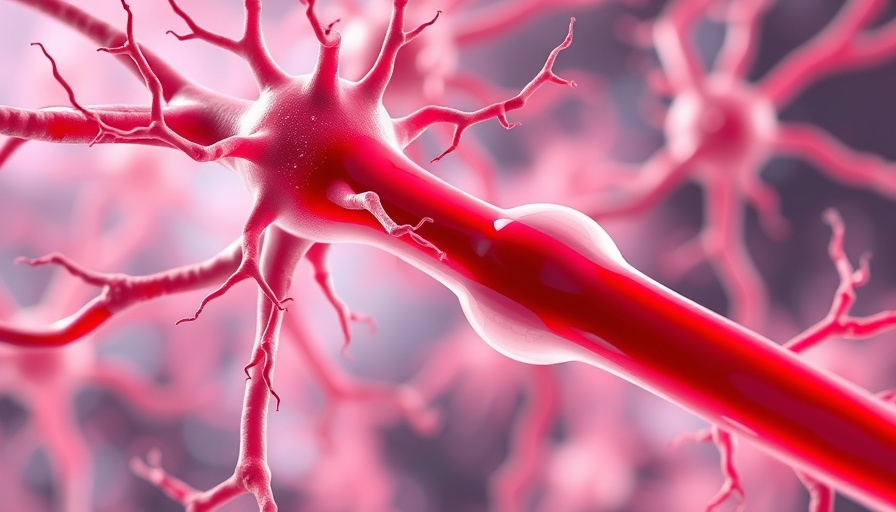
The Intricate Connection Between Leaky Blood-Brain Barrier and Parkinson's Disease
Parkinson's disease affects millions worldwide, and recent research shines a critical light on how the blood-brain barrier (BBB), a vital protective shield around our brain, plays a role in exacerbating this debilitating condition. The BBB is designed to prevent harmful substances from entering the brain while allowing nutrients to pass through. However, when this barrier fails, it can lead to catastrophic complications.
Understanding α-Synuclein and Its Impact
At the heart of the problem is a protein called α-synuclein (α-syn), which has been identified as a significant player in Parkinson's disease and associated Lewy body dementia. In healthy brains, α-syn is primarily found in a monomeric form, contributing to essential neuronal functions. However, in the brains affected by Parkinson’s, this protein aggregates into structures known as preformed fibrils (PFF), which trigger neuroinflammation and disrupt the BBB.
The Science Behind the Damage
According to the findings from recent studies, the introduction of both monomeric α-syn and PFF to endothelial cells—cells that line the blood-brain barrier—revealed alarming results. While normal α-syn functioned without negative repercussions, the aggregates were found to disrupt vascular endothelial cadherin (VE-cadherin), a critical component of the BBB, leading to increased permeability. This means that in Parkinson's patients, harmful substances can enter the brain more easily, igniting inflammation and neuronal damage.
Inflammation’s Role in Neurodegeneration
Recent gene expression analyses have linked the BBB damage caused by PFF to inflammation through markers such as TNF-α and NF-κB being significantly upregulated. This relationship suggests that chronic inflammation may not only be a consequence of Parkinson’s but also a contributor to its progression, underscoring the importance of addressing inflammatory pathways when considering potential treatments.
Potential Therapeutic Approaches
One point of hope emerges from this research—the prospect of targeting TNF-α as a therapeutic strategy. By inhibiting this inflammatory compound, it may be possible to mitigate some of the damage caused to the BBB, potentially slowing disease progression and improving the quality of life for patients. This approach could be transformative, offering new avenues for drug development that take into account the complexity of neurodegenerative diseases.
Future Implications for Parkinson's Treatment
The findings draw attention to an often-overlooked aspect of Parkinson's research: the monitoring and protection of the BBB in patients. Unlike other neurodegenerative conditions, such as Alzheimer’s, which have received substantial focus in this area, Parkinson's presents unique challenges that warrant further exploration of BBB integrity. As researchers continue to decode the interaction between α-synuclein aggregates and the BBB, we may uncover targeting strategies that connect cellular biology with robust health outcome improvements for those impacted by Parkinson’s disease.
Why This Matters to You
For health-conscious individuals aged 30-55 looking to expand their understanding of aging and cellular biology, these insights into the complexities behind Parkinson’s disease highlight the importance of maintaining both brain health and understanding the cellular mechanisms at play. As science continues to uncover how inflammation and cellular integrity intersect, staying informed on these topics allows for more informed discussions about aging and healthspan, paving the way for innovative strategies to enhance vitality.
By understanding the implications of leaky blood-brain barriers in neurodegenerative diseases, we can empower ourselves with knowledge to advocate for scientific approaches aimed at longevity and improved quality of life.
 Add Row
Add Row  Add
Add 




 Add Row
Add Row  Add
Add 


Write A Comment